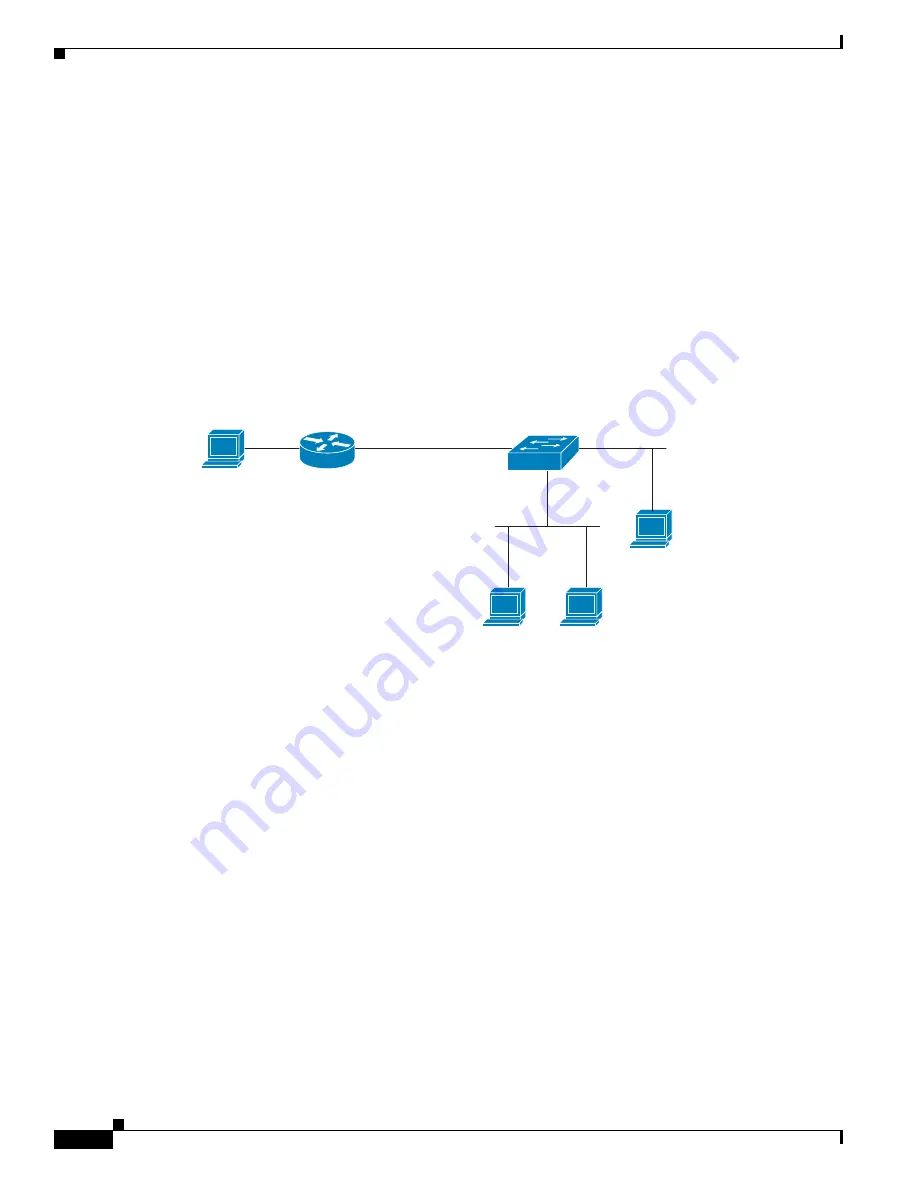
44-6
Cisco Catalyst Blade Switch 3120 for HP Software Configuration Guide
OL-12247-01
Chapter 44 Configuring IP Multicast Routing
Understanding Cisco’s Implementation of IP Multicast Routing
The redundant PIM stub router topology is not supported. The redundant topology exists when there is
more than one PIM router forwarding multicast traffic to a single access domain. PIM messages are
blocked, and the PIM asset and designated router election mechanisms are not supported on the PIM
passive interfaces. Only the nonredundant access router topology is supported by the PIM stub feature.
By using a nonredundant topology, the PIM passive interface assumes that it is the only interface and
designated router on that access domain.
The PIM stub feature is enforced in the IP base image. If you upgrade to a higher software version, the
PIM stub configuration remains until you reconfigure the interfaces.
In
Figure 44-2
, Switch A routed uplink port 25 is connected to the router and PIM stub routing is enabled
on the VLAN 100 interfaces and on Host 3. This configuration allows the directly connected hosts to
receive traffic from multicast source 200.1.1.3. See the
“Configuring PIM Stub Routing” section on
page 44-14
for more information.
Figure 44-2
PIM Stub Router Configuration
IGMP Helper
PIM stub routing moves routed traffic closer to the end user and reduces network traffic. You can also
reduce traffic by configuring a stub router (switch) with the IGMP helper feature.
You can configure a stub router (switch) with the igmp helper help-address interface configuration
command to enable the switch to send reports to the next-hop interface. Hosts that are not directly
connected to a downstream router can then join a multicast group sourced from an upstream network.
The IGMP packets from a host wanting to join a multicast stream are forwarded upstream to the next-hop
device when this feature is configured. When the upstream central router receives the helper IGMP
reports or leaves, it adds or removes the interfaces from its outgoing interface list for that group.
For complete syntax and usage information for the ip igmp helper-address command, see the
Cisco IOS
IP and IP Routing Command Reference, Release 12.1
.
Auto-RP
This proprietary feature eliminates the need to manually configure the RP information in every router
and multilayer switch in the network. For auto-RP to work, you configure a Cisco router or multilayer
switch as the mapping agent. It uses IP multicast to learn which routers or switches in the network are
possible candidate RPs to receive candidate RP announcements. Candidate RPs periodically send
multicast RP-announce messages to a particular group or group range to announce their availability.
Source
200.1.1.3
Router
3.1.1.2.255.255.255.0
Switch
A
Host 1
Host 2
VLAN 100
Host 3
Port 25
Port 20
202361












































